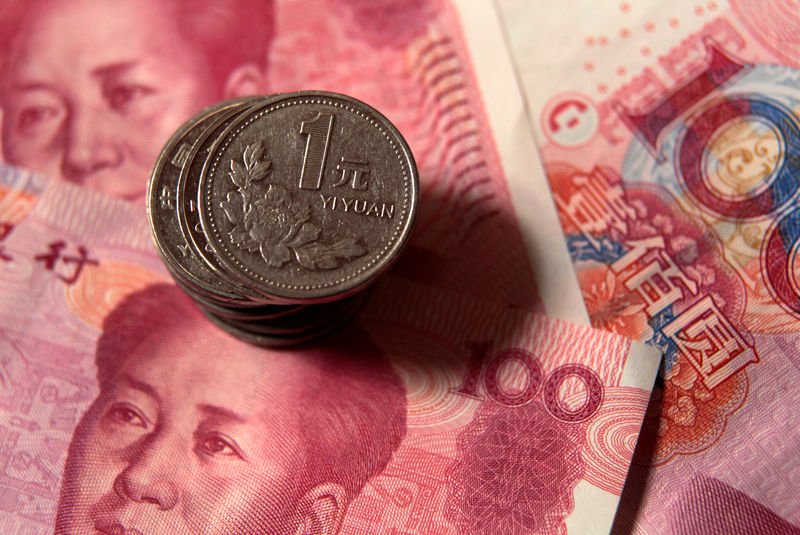By Ambar Warrick
Investing.com -- Most Asian currencies fell on Monday after data showed a slowdown in Chinese factory activity, while the Japanese yen extended its sharp recovery against the dollar.
As of 10:17 pm ET (0217 GMT), the Chinese yuan USD/CNY fell slightly to 6.7479 against the dollar. The South Korean won USD/KRW, Philippine peso USD/PHP and Malaysian ringgit USD/MYR all shed about 0.1% against the greenback.
On the other hand, the Japanese yen USD/JPY jumped 0.6% to 132.44, recovering sharply from a recent record low to the dollar.
Official Chinese data on Sunday showed that the country’s manufacturing sector unexpectedly shrank in July. On Monday, a private survey indicated a similar slowdown, but showed that the sector was still in expansion.
The world's second-largest economy is still reeling from lockdowns to prevent the spread of COVID-19 in the country, after a series of outbreaks this year. Concerns are also growing over a potential meltdown in China's debt-saddled real estate sector, which could cause contagion across most of Asia.
A slowdown in Chinese factory activity bodes poorly for other Asian economies, given the country’s role as a key export destination for the region. Oil and metal markets also fell in the wake of the data.
But losses in Asian currencies were somewhat muted thanks to weakness in the US Dollar Index, which fell about 0.2%. The greenback has been on a downtrend since last week amid expectations that U.S. inflation has peaked, and could eventually lessen the dollar’s safe-haven appeal this year.
Still, the greenback has gained substantially in 2022 on interest rate hikes by the Federal Reserve, which has caused widespread weakness in Asian markets.
Focus now turns to U.S. PMI and non-farm payrolls data, due later this week.
On Monday, weak readings from South Korea also weighed on Asian markets. Data showed the country’s trade deficit widened substantially in July, following a spike in imports.
Japanese manufacturing data also contracted slightly in July.
